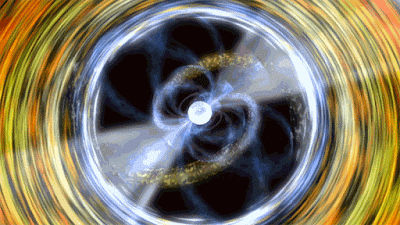 |
| Pulsars spin rapidly while emitting powerful beams of radiation.Credit: Dana Berry/NASA |
Topics: Astrophysics, Instrumentation, International Space Station, NASA, Space Exploration
NATIONAL HARBOR, Maryland
From its perch aboard the International Space Station, a NASA experiment has shown how future missions might navigate their way through deep space. Spacecraft could triangulate their location, in a sort of celestial Global Positioning System (GPS), using clockwork-like signals from distant dead stars.
Last November, the Neutron Star Interior Composition Explorer (NICER) spent a day and a half looking at a handful of pulsars — rapidly spinning stellar remnants that give off beams of powerful radiation as they rotate. By measuring tiny changes in the arrival time of the pulses, NICER could pinpoint its location to within 5 kilometres.
It is the first demonstration in space of the long-sought technology known as pulsar navigation. One day, the method could help spacecraft steer themselves without regular instructions from Earth.
NASA test proves pulsars can function as a celestial GPS, Alexandra Witze, Nature
Comments